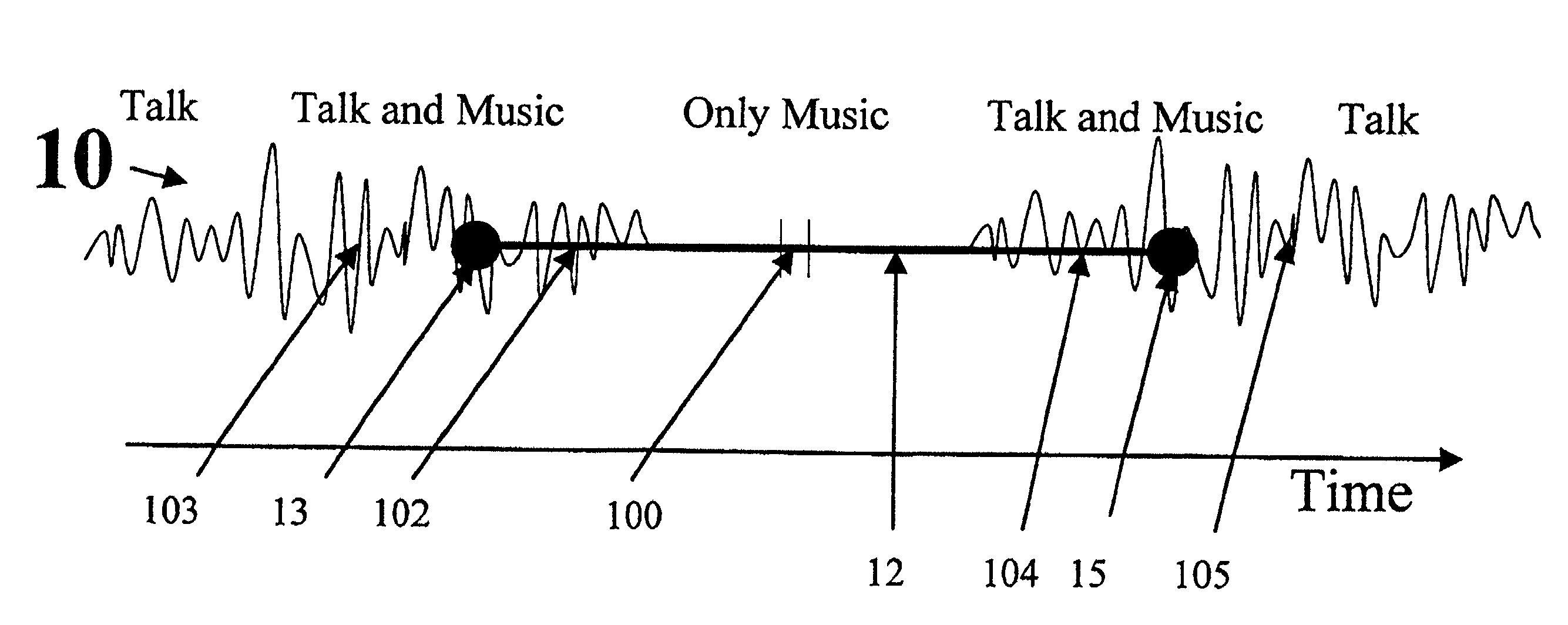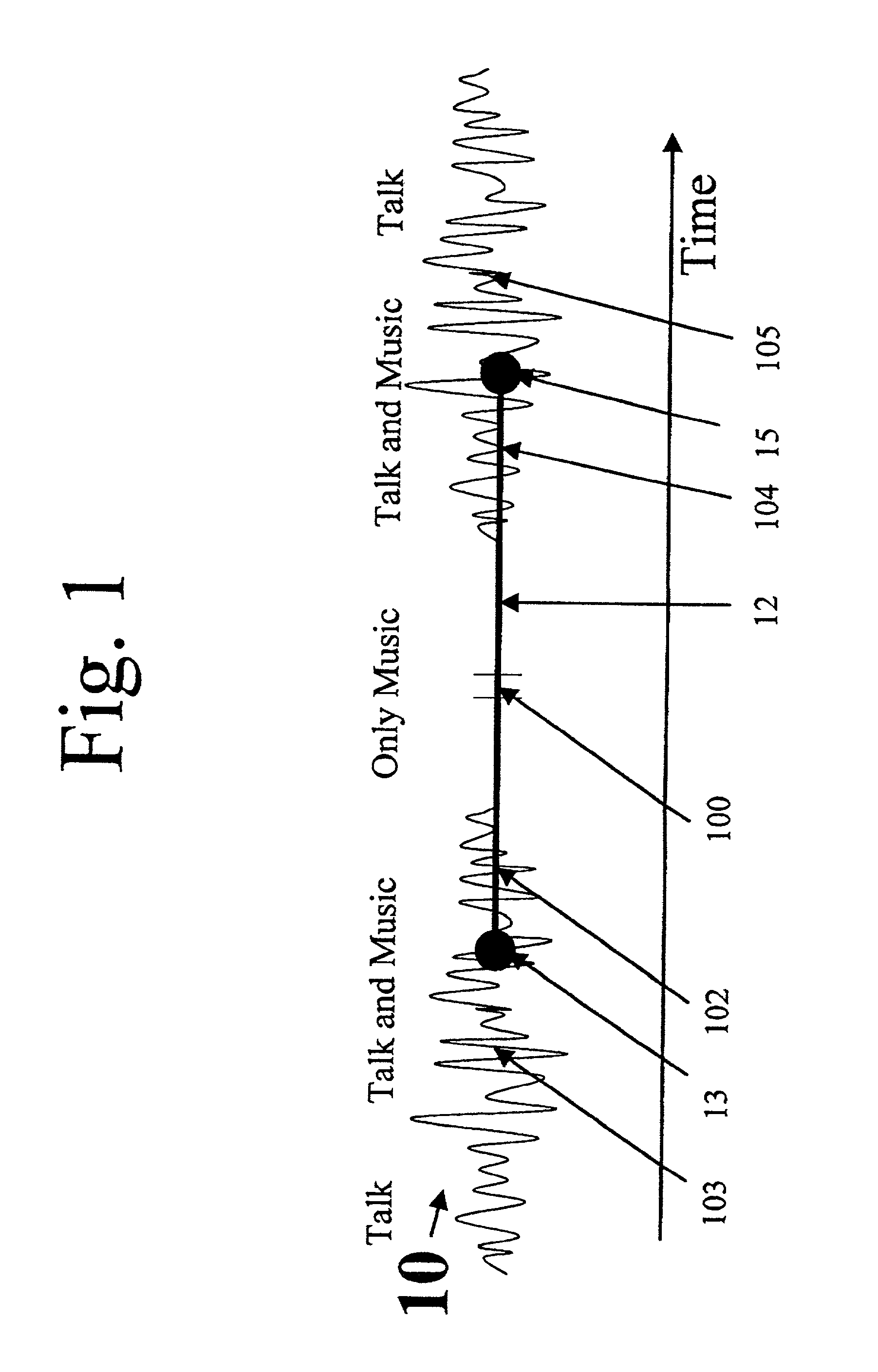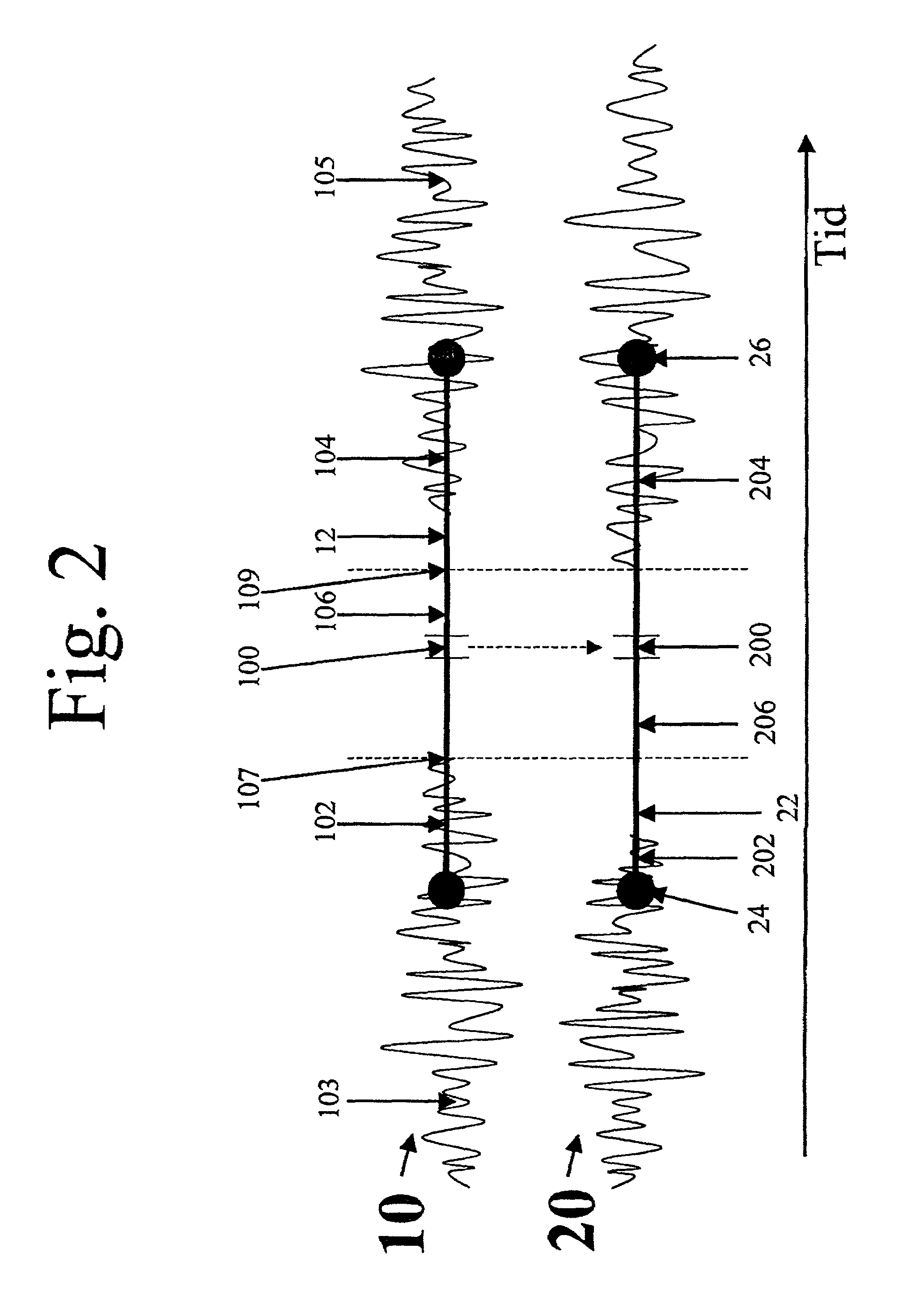Method and arrangement for search and recording of media signals
a technology of media signals and search and recording, applied in special data processing applications, speech analysis, instruments, etc., can solve the problems of inability to record music completely, time-consuming to pay attention to the radio, and inability to know which songs will be transmitted to listeners in most cases, so as to achieve a longer, more complete, and higher quality segment of source material
- Summary
- Abstract
- Description
- Claims
- Application Information
AI Technical Summary
Benefits of technology
Problems solved by technology
Method used
Image
Examples
Embodiment Construction
[0018]Below follows a procedure and an arrangement for the searching and recording of source material in media channels containing undesirable signal components, where the same source material is transmitted at least twice, either in the same media channel or in different media channels. The method distinguishes between desirable source material and undesirable material, such as talk, commercials and distortions. Examples of source material could be music, film, and similar. The searching and recording of hit songs in a radio transmission have been used as an illustrative example in this application. It is to be understood that the invention is not limited to identifying and recording hit songs; it may be used for films, music videos and other kinds of source material as well. The searching and recording may be done by an iterative procedure comprising finding, comparing and storing of signal segments that are indicated by search keys derived from the source material that is to be r...
PUM
 Login to View More
Login to View More Abstract
Description
Claims
Application Information
 Login to View More
Login to View More - R&D
- Intellectual Property
- Life Sciences
- Materials
- Tech Scout
- Unparalleled Data Quality
- Higher Quality Content
- 60% Fewer Hallucinations
Browse by: Latest US Patents, China's latest patents, Technical Efficacy Thesaurus, Application Domain, Technology Topic, Popular Technical Reports.
© 2025 PatSnap. All rights reserved.Legal|Privacy policy|Modern Slavery Act Transparency Statement|Sitemap|About US| Contact US: help@patsnap.com



